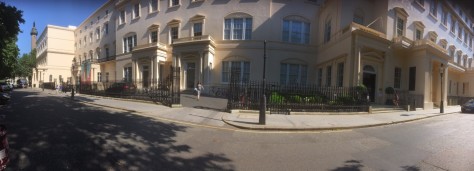
On the 3rd of July the Zooniverse team headed to London to take part in the Royal Society’s Summer Science Exhibition. Several Zooniverse projects were featured, including Galaxy Zoo, Penguin Watch and The Plastic Tide:

For those of you new to the Zoo, the Zooniverse is an online platform for Citizen Science research. It relies on volunteers to analyse data which then contributes to real research. This often results in new discoveries, publications and data sets useful to the wider research community. At the Royal Society, Zooniverse team members; Adam McMaster, Grant Miller, Cam Allen, Jim O’Donnell and Helen Spiers gave visitors a whistle stop tour of the Zooniverse and answered any questions people had about what we do. Visitors were surprised at the plethora of projects on the platform that they can contribute to, and got to ‘listen to the Zooniverse’ via a web page that plays a note for every classification made! You can listen to it here, it’s not the easiest thing to dance to but I think it makes nice background music.

Members of the Galaxy Zoo team, Coleman Krawczyk and Jen Gupta, shared the ‘Tactile Universe’ with visitors. The Tactile Universe is a project aimed at making astronomy more accessible to those with visual impairments. The team behind it has developed a way to 3D print galaxy images so that the brighter parts of the picture stick out more. This allows you to feel the shape of the galaxy rather than see it. People really seemed to enjoy trying to match up pictures of the galaxies with what they could feel on the ‘Tactile Universe’ tiles. Also on show was the Galaxy Zoo project, which asks volunteers to identify the type of galaxy in an image.

Do you want to count some penguins? If yes then Penguin Watch is the project for you! Fiona Jones, a member of the Penguin Watch team, and myself showed this project off to visitors at the exhibition. Visitors were interested to learn how something as simple as clicking on the penguins in an image can make a big difference to not only scientists but also the penguins themselves. This is because scientists can use the information they get from Penguin Watch to monitor and protect the penguin populations. We also had some cold weather gear and a ration pack which the team need to set up the Penguin Watch cameras in the cold arctic climate. (I still tried the gear on despite the 25 degree temperatures in sunny London!).

Showing visitors the big problem of plastic pollution in our oceans was The Plastic Tide team; Peter Kohler, Stefan Leutenegger, Karl-Mattias Tepp, and Arturo Castillo. The Plastic Tide project asks volunteers to look at photos of beaches taken by their drone and tag plastic and other rubbish. Visitors to the exhibition were very interested to learn that they could help with this project even from the comfort of their own homes! The team also gave a live demonstration of how they are using the data they get from the Zooniverse to train a computer to identify rubbish on beaches!
Visit Zooniverse: www.zooniverse.org
Visit Galaxy Zoo: www.galaxy-zoo.org
Visit Penguin Watch: www.penguinwatch.org
Visit Plastic Tide: www.the-plastic-tide.org

